During World War II, roughly 280,000 men and women from Louisiana served in the Armed Forces. There were over 30 military installations in the state, in addition to more than 40 prisoner of war camps. Louisiana industry supplied the Allied war machine with vital materials such as oil, synthetic rubber, and ships of all sizes. Civilians collected scraps, grew Victory gardens, and bought war bonds to build aircraft. Louisianans were all in it together, and this series highlights when the Pelican State went to war.
In early 1942, still reeling from the Japanese attack on the American fleet at Pearl Harbor, the United States was on the defensive as it gathered military strength. Along with frontline troops, medical personnel would be vital assets in forward operating areas. The recruitment of doctors and nurses grew in earnest, and hospital units were assembled. On July 15, 1942, the 24th General Hospital was reactivated. The unit had served in France in World War I, where it earned the nickname “Tulane Unit” as the 100 doctors in the unit were from New Orleans, and many specifically from Tulane University.
The surgeon general of the US Army, General James Magee, requested in early 1942 that the hospital unit from Tulane University be reorganized as the 24th General Hospital. In charge of the unit was Colonel Dr. Walter Clifton Royals, a 1917 graduate of the Tulane College of Medicine. Doctors, dentists, and medical administrators were recruited from Tulane to comprise the group. Nurses were provided by the US Army Nurse Corps and led by New Orleanian Lieutenant Colonel Mary Miller, who was a graduate of the Charity Hospital nursing program. News of the unit’s formation spread around town, making the local newspapers. Another hospital group was formed from Louisiana State University’s (LSU) medical school, also located in New Orleans. The two groups were hosted and toasted around town with dinner parties and celebrations to wish them well as they left for training.
The “Tulane Unit,” as they were once again known, was sent first to Fort Benning, Georgia, to begin training for deployment overseas. After more than a year in preparation for deployment, the Tulane Unit boarded a transport ship in August 1943 for transportation to North Africa. The first location setup for the 24th General Hospital was in Bizerte, Tunisia, where they operated a 1,000 bed hospital. In Bizerte, the Tulane Unit treated GIs wounded in Italy. It was just the beginning of the grim reality they would face as they treated grievously wounded GIs and enemy soldiers for the next 19 months.
-

Although they would not be going into battle, the men of the 24th General Hospital underwent military training at Fort Benning, Georgia, in 1942-1943 to prepare to deploy. The National WWII Museum
-

Aerial view of the 24th General Hospital outside of Bizerte, Tunisia. The hospital was in Bizerte from September 1943 - May 1944. The National WWII Museum.
As the Allies pushed further up the “boot” of Italy, the 24th General Hospital prepared to move out of North Africa and into Italy. The first stop in Italy for the Tulane Unit was a bivouac in Rome, where they worked from late June until late July 1944. With a more permanent hospital location established in July, the Tulane Unit moved to a 1,500-bed facility in Grosseto, Italy, which had previously served as a tuberculosis sanitorium. Their stay in Grosseto was short-lived, as the 24th General Hospital was moved forward to Florence in September 1944. There they moved into a large building that had formerly been the Mussolini School of Aviation.
-

An aerial view of rear of the main building of the 24th General Hospital in Grosseto, Italy. The National WWII Museum.
-

On this map hospitals are indicated by plus signs. Grosseto is on the west coast of Italy, north of Rome. From US Army publication The Medical Department – Medical Service in the Mediterranean and Minor Theaters, CMH Pub 10-8.
-

An aerial view of the former Mussolini School of Aviation, then serving as the 24th General Hospital in Florence, Italy. The National WWII Museum.
According to an account given by Lt. Col. Miller, leading the nurses of the 24th General Hospital, they averaged 2,500 patients at a time while stationed in Florence with only 125 nurses on staff. Just 17 miles from the front lines, she recalled there was “plenty to do all the time.” In May 1945, the war came to an end, and the influx of patients withered. The 24th General Hospital remained open in Florence until June 1945, when they were required to clear out to make way for a redeployment and training center. They remained in Italy until October 1945, working in makeshift locations as space was available. The 24th General Hospital had spent over two years in the Mediterranean theater. In that time, this small unit of Tulane doctors (there were 42), 125 nurses (many from New Orleans), and enlisted men treated 31,640 casualties with only 83 deaths.
-

Ambulances lined up outside of the hospital in Florence. The original caption echoes Lt. Col. Miller’s experience there: “Florence, pts (patients) in, pts out.” The National WWII Museum
-

Colonel Walter Clifton Royals, Commanding Officer of the 24th General Hospital and Tulane doctor holds a plaque awarded to the Tulane Unit for their distinguished service to the 5th Army in Italy. The National WWII Museum.
Despite the constant work, and sometimes makeshift conditions, there were times the hospital staff could enjoy themselves and bring a little of their Louisiana spirit to the Mediterranean. In North Africa, the 64th General Hospital, Tulane’s LSU counterpart, was stationed nearby. The two groups continued the schools’ rivalry, competing in sporting events, which of course included football. In February 1945, the Tulane Unit hosted a Mardi Gras party in Florence, showing that even amid war and far away from home, the good times could still roll.
Photos Here: 2007.243.290, 2007.243.152, and 2007.243.193
-

Returning home! Men of the 24th General Hospital aboard the transport ship which will take them home after more than 2 years away. They left Italy on October 11, 1945. The National WWII Museum.
-

Home was never too far away. Colonel Royals and Major George Grant (L-R), the Commanding and Executive Officers of the 24th General Hospital, read copies of the New Orleans newspaper Times-Picayune in Florence. The National WWII Museum.
-

Let the good times roll! Despite the demands on the hospital staff, the Tulane Unit celebrated Mardi Gras in Florence in February 1945. From left to right are Dr. Joseph Sabatier, Dr. Henry Miles, and Dr. George Grant. The National WWII Museum.
The National WWII Museum has 2 photo collections from the 24th General Hospital available to view on the Digital Collections website. One is a photo collection of Dr. Thomas Weiss, a doctor with the Tulane Unit. The other is a photo collection of Dr. George Grant, also with the Tulane Unit.

New Orleans and the World
Support the continuing educational mission of The National WWII Museum by shopping our Museum Store book selection here.
Kali Martin
Kali Martin is a former Research Historian of The National WWII Museum's Jenny Craig Institute for the Study of War and Democracy.
Cite this article:
MLA Citation:
APA Citation:
Chicago Style Citation:
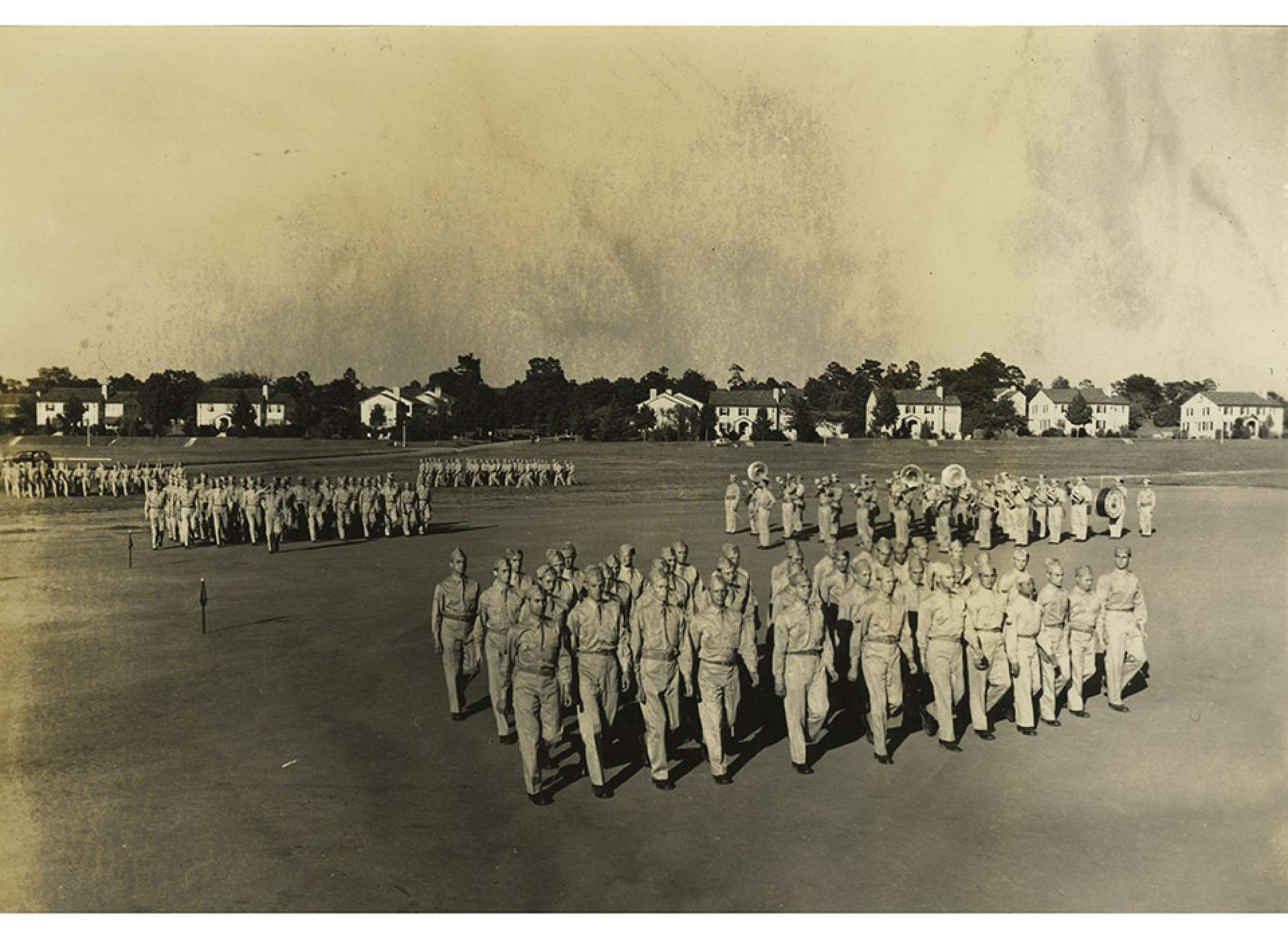
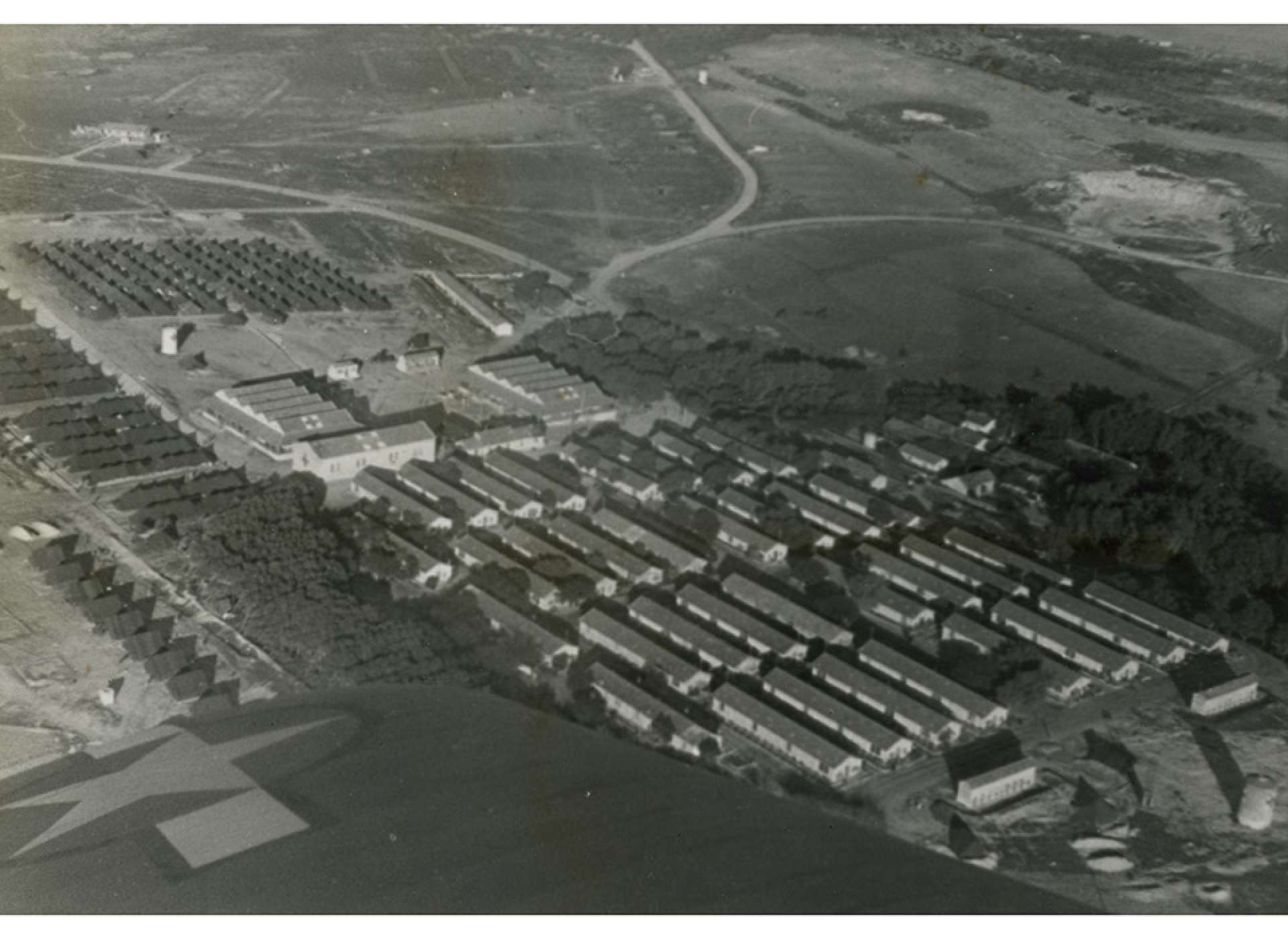
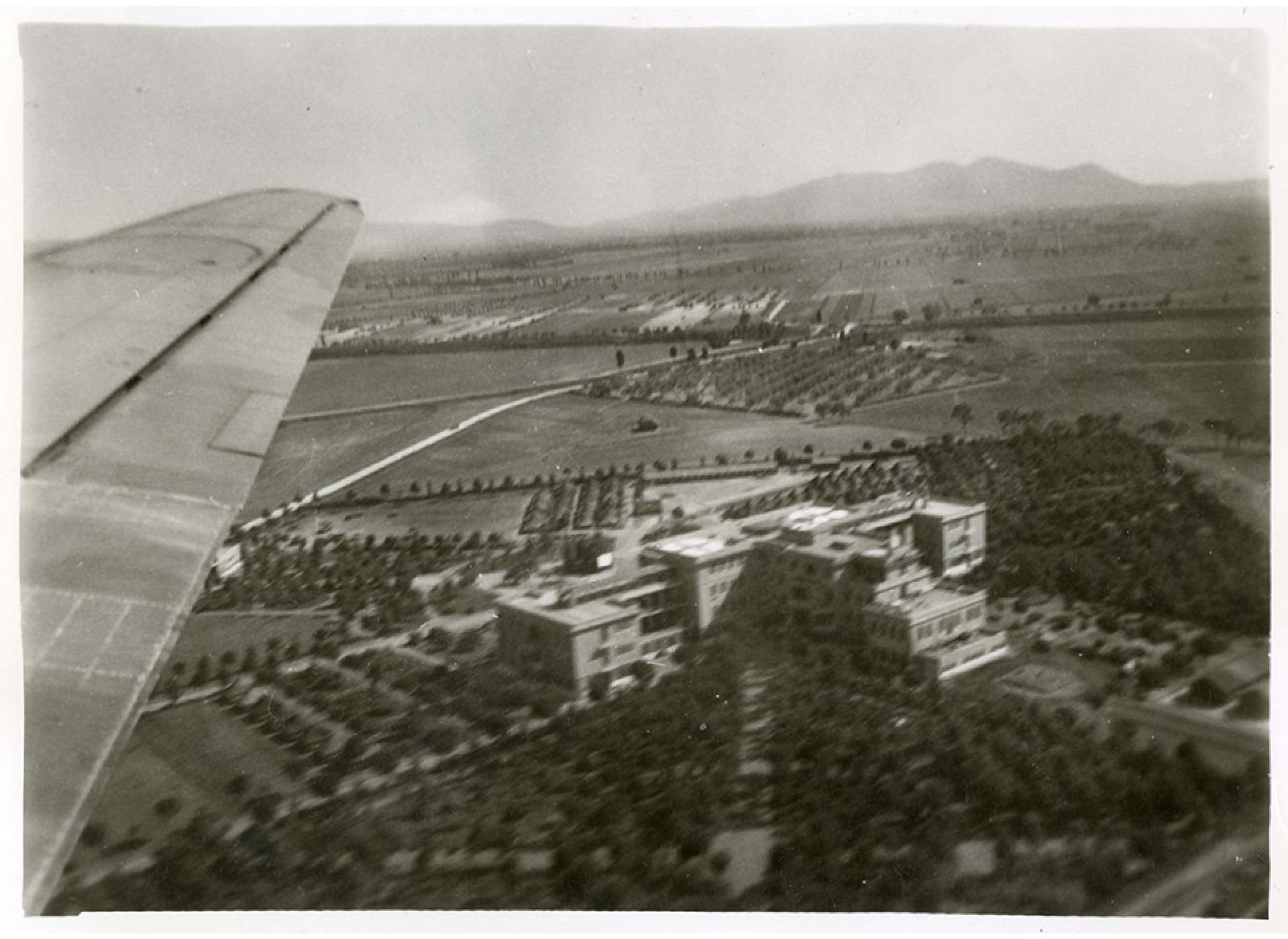

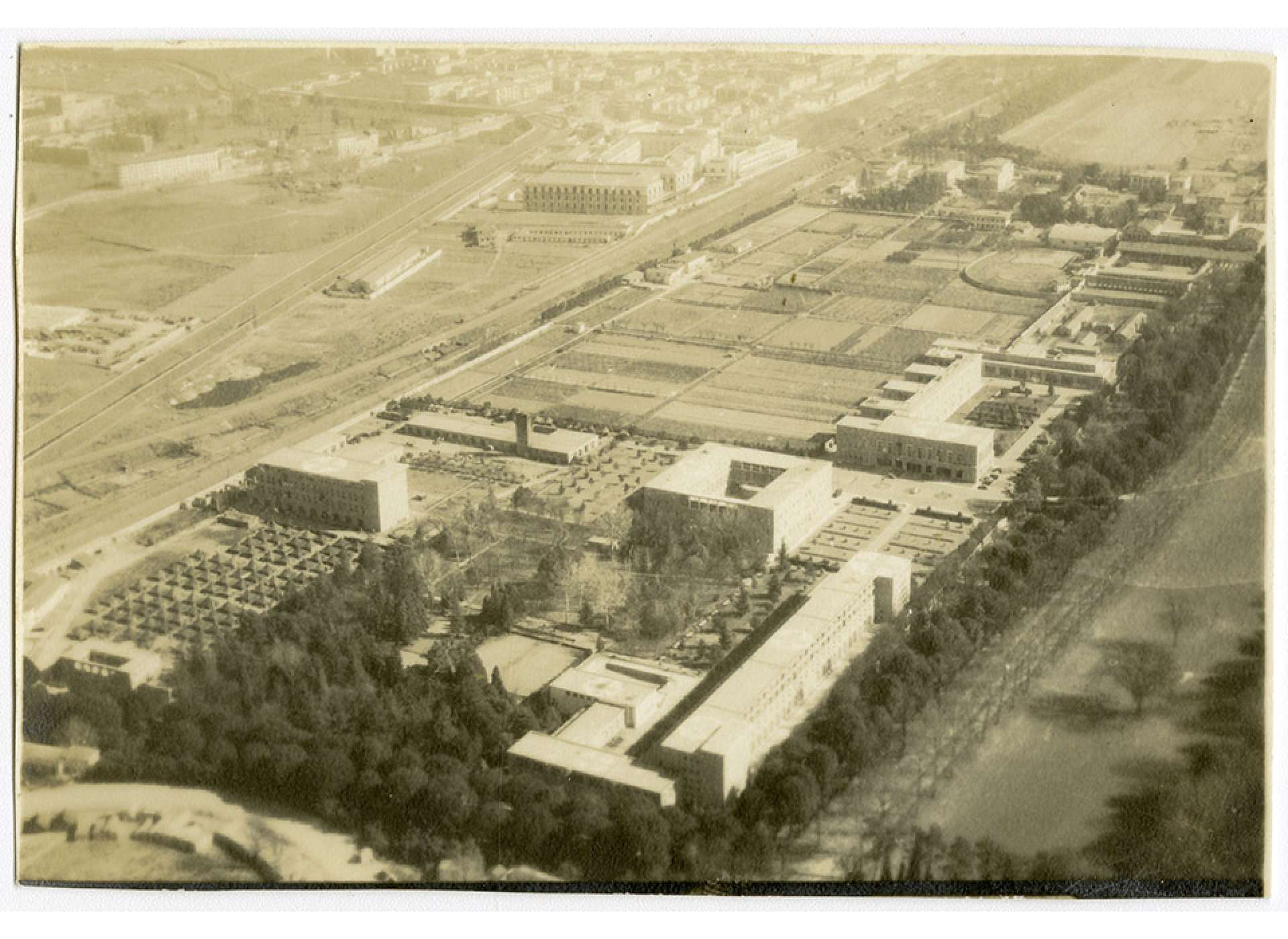
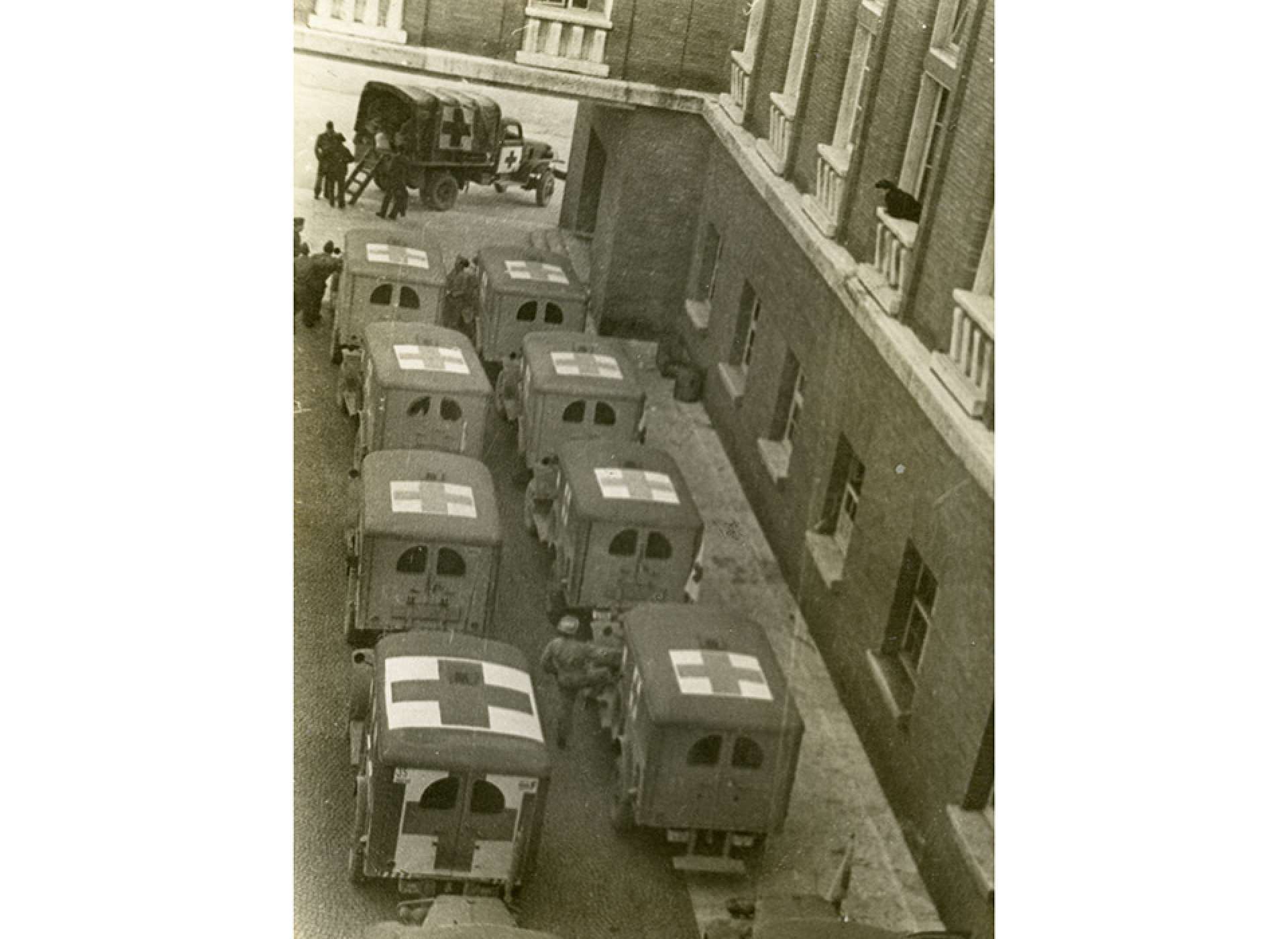
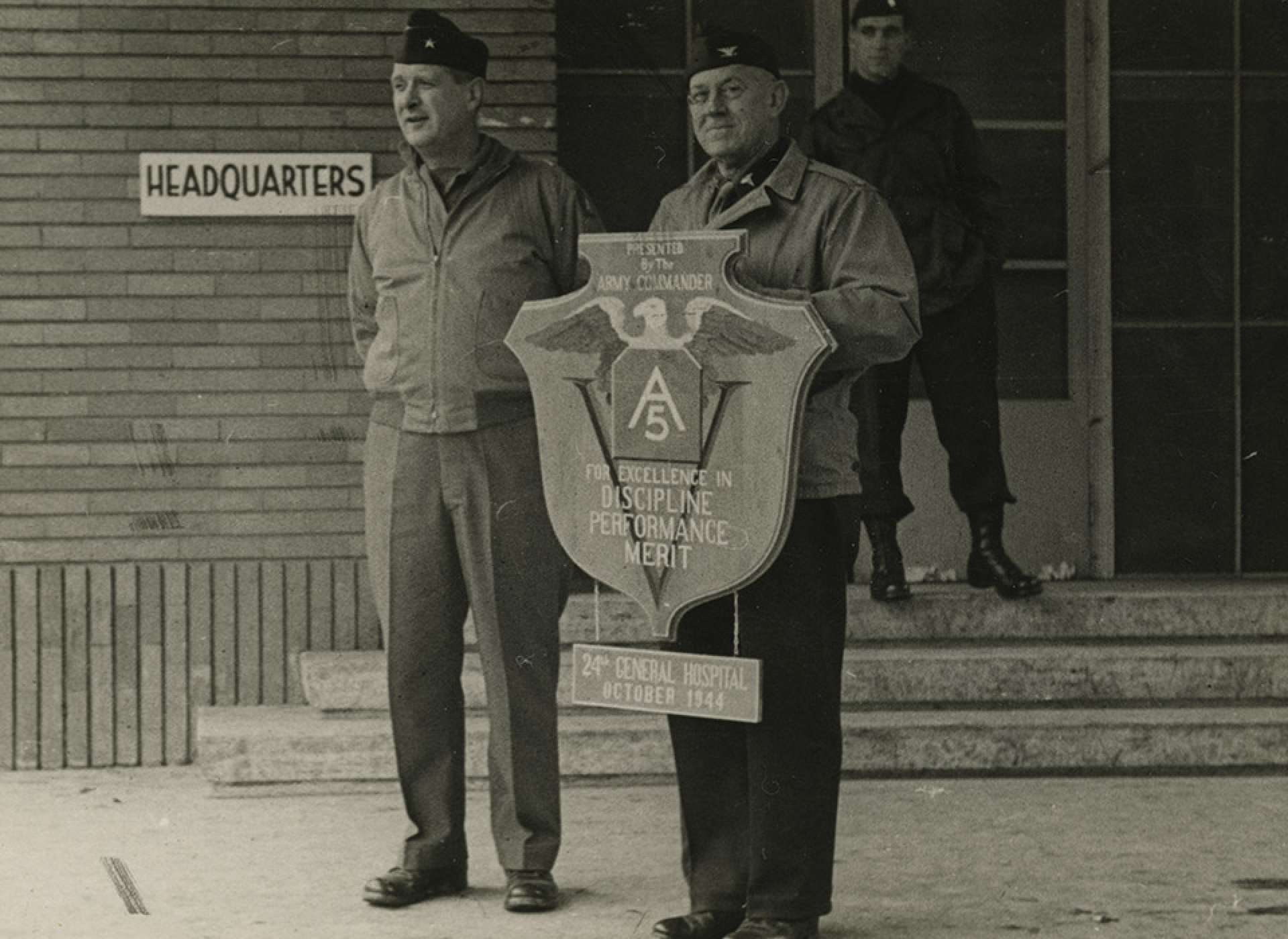
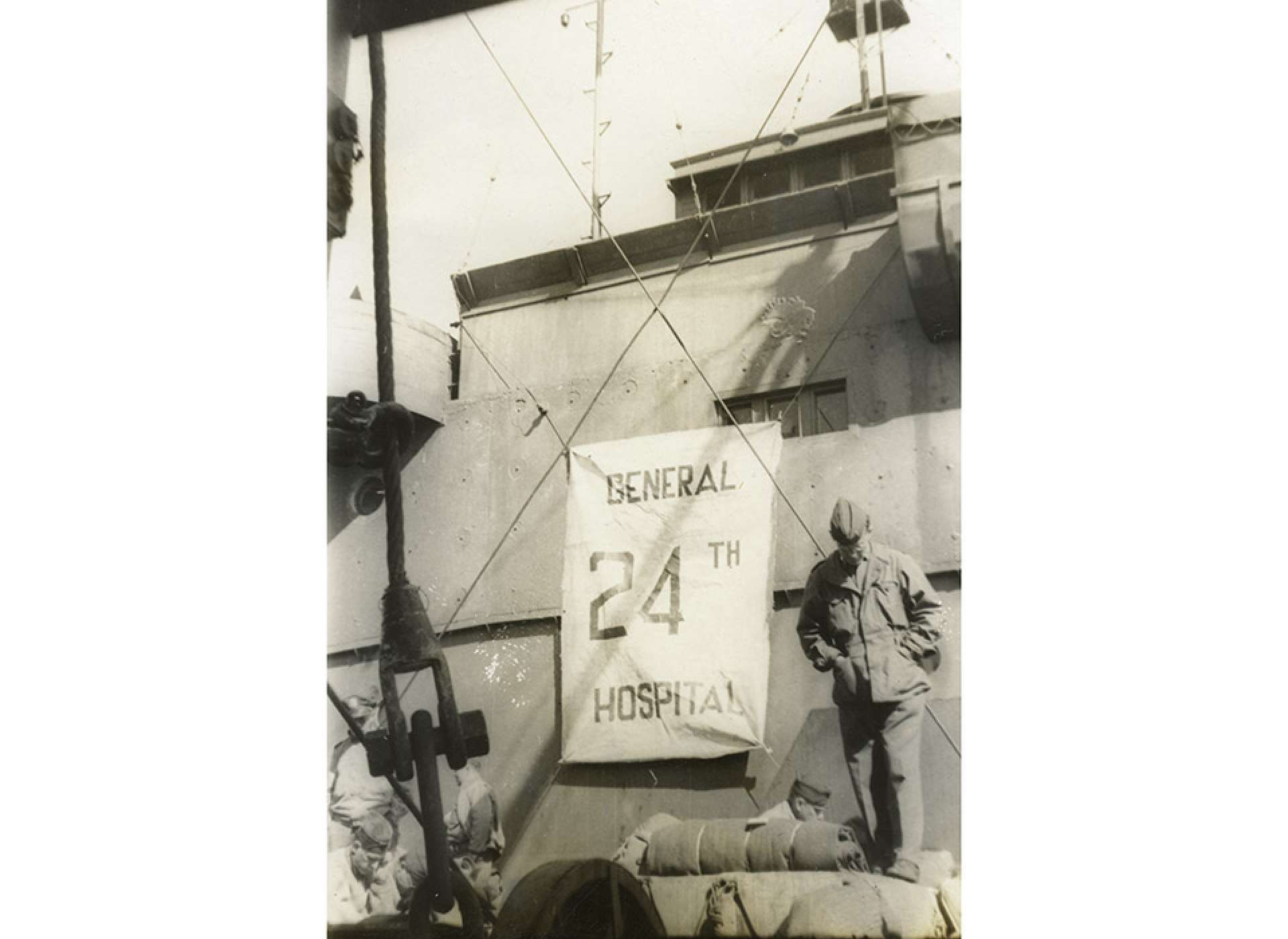
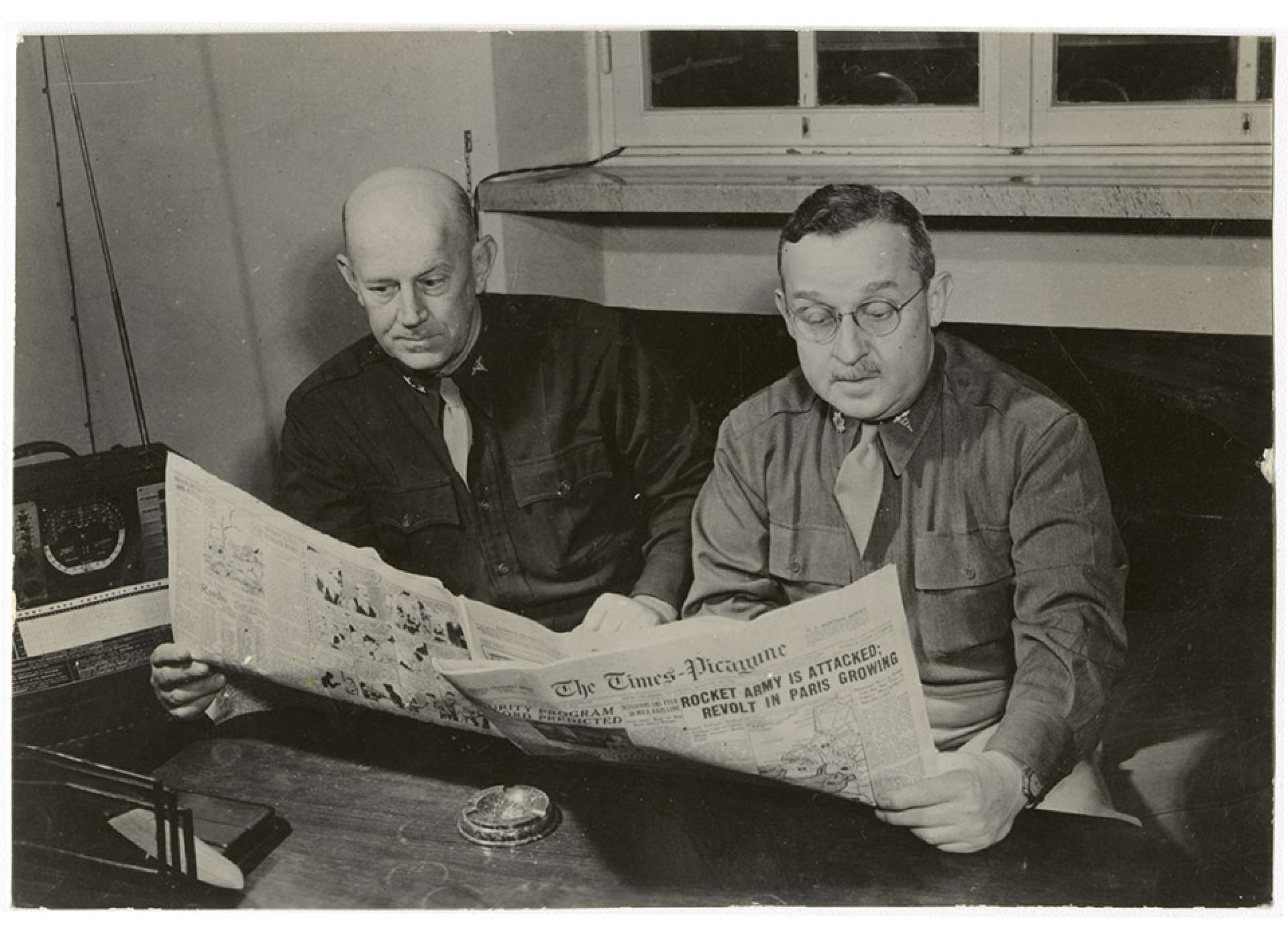
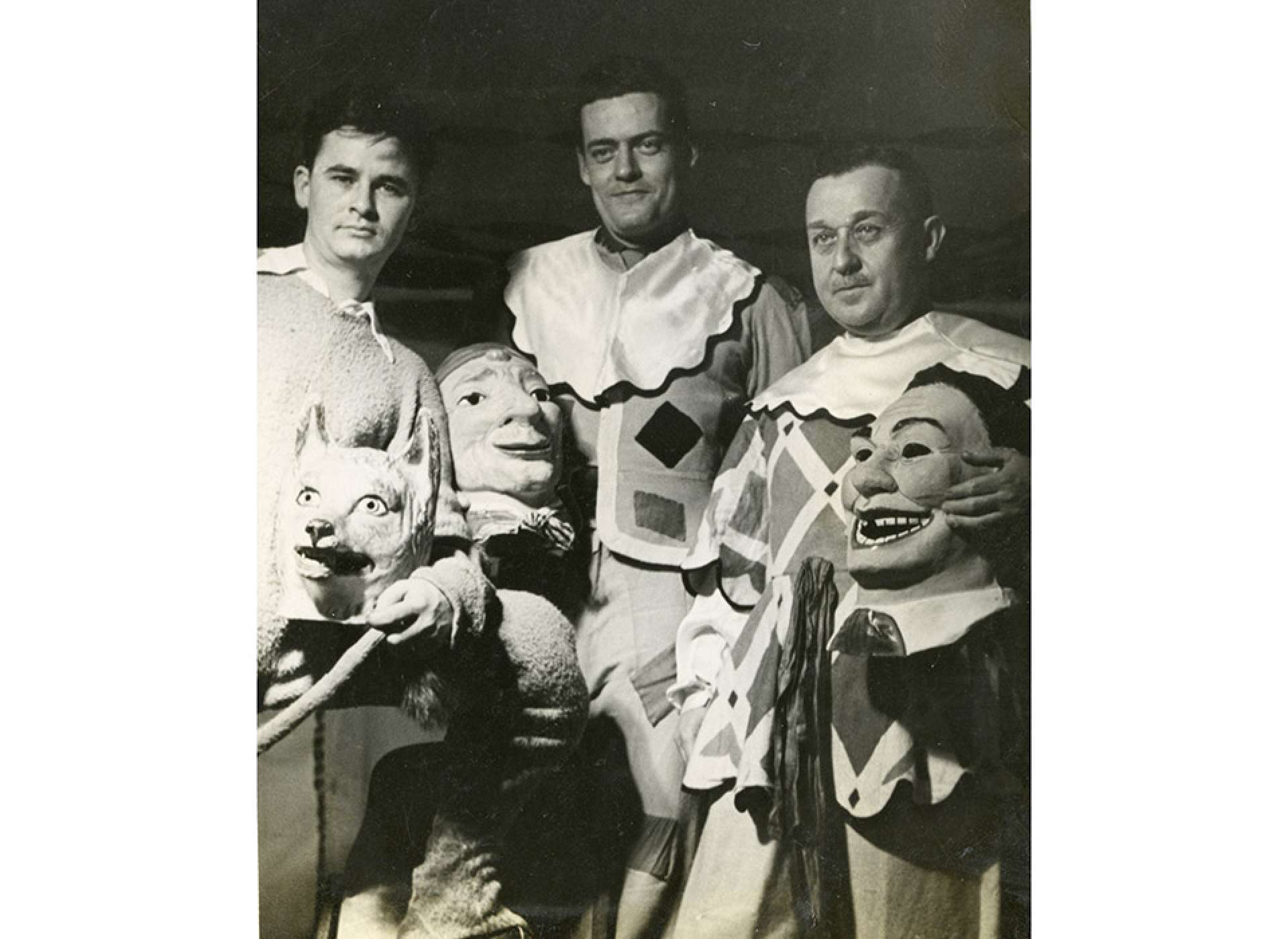




![Max Fuchs, New York City cantor, sings as Rabbi Sydney [sic] Lefkowitz, Richmond, VA, conducts the first Jewish services from Germany.](/sites/default/files/styles/max_650x650/public/2025-10/image1.jpg)



